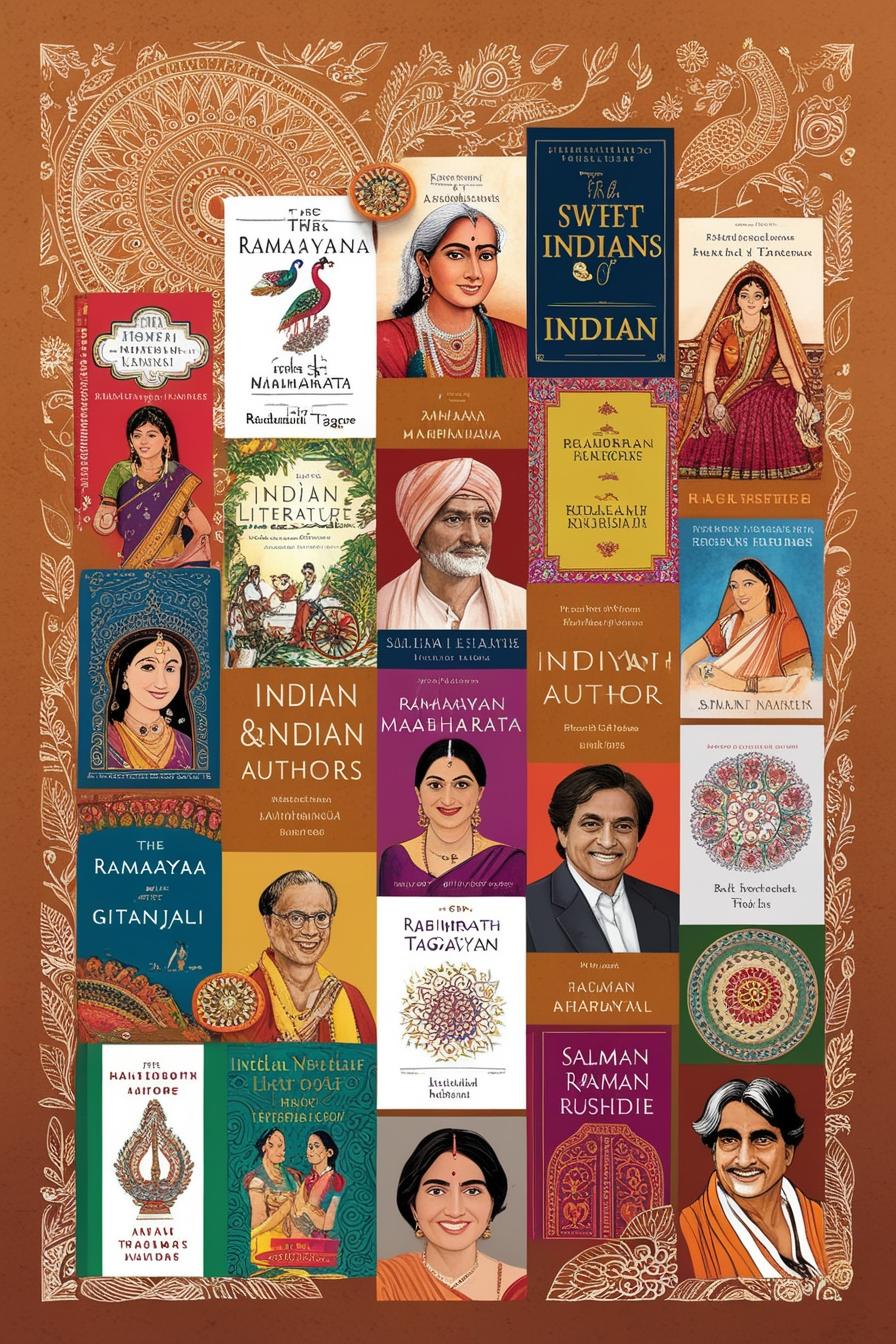### A Journey Through Indian Literature
Indian literature is one of the oldest and richest traditions in the world, reflecting the diverse cultures, languages, and histories of the Indian subcontinent. It has evolved over thousands of years, beginning with ancient texts and expanding into a vast array of genres and styles, offering a deep insight into the spiritual, social, and cultural life of India.
#### Ancient Roots
Indian literature began in ancient times with sacred texts written in Sanskrit, such as the *Vedas*, *Upanishads*, and the two great epics, the *Mahabharata* and the *Ramayana*. These texts are not only central to Indian spirituality but also serve as foundational works of philosophy, morality, and human understanding. The *Vedas* provided religious hymns and rituals, while the *Mahabharata* and *Ramayana* brought forth legendary tales of heroism, family, duty, and divine intervention. These stories have been passed down for generations, continuing to shape Indian thought and values.
The *Mahabharata*, often considered the longest epic in world literature, offers timeless lessons on war, politics, and the complexities of human nature. Similarly, the *Ramayana* tells the story of Rama, a prince, and his journey of righteousness, loyalty, and sacrifice. Both epics explore the theme of dharma (moral duty) and remain deeply influential in Indian society.
#### The Bhakti and Sufi Movements
Around the 12th century, the Bhakti and Sufi movements emerged, greatly influencing Indian literature. Bhakti poets like Kabir, Tulsidas, and Mirabai wrote about devotion to God, love, and equality. Their works were written in regional languages like Hindi and Bengali, making them accessible to the common people. They emphasized a personal connection with God, transcending religious boundaries, and challenged the rigid social hierarchy of the time.
Similarly, Sufi poets like Amir Khusro and Bulleh Shah, inspired by Islamic mysticism, wrote about love, humanity, and spirituality. Their poetry conveyed messages of peace, harmony, and unity, blending Indian and Persian cultural influences.
#### Colonial Era and Indian Independence
With the arrival of British colonial rule, Indian literature underwent another transformation. Writers began to use literature as a tool to express resistance against colonialism and to explore themes of identity, freedom, and social change. In this period, several Indian writers started writing in English, contributing to what is now called Indian English literature.
Rabindranath Tagore, a Bengali poet and novelist, became the first non-European to win the Nobel Prize in Literature in 1913. His works, like *Gitanjali*, highlighted universal themes of humanity, spirituality, and nature. Other notable writers from this period include Premchand, who wrote realistic fiction in Hindi and Urdu, exploring themes of poverty, social inequality, and rural life.
#### Modern Indian Literature
In the post-independence era, Indian literature continued to thrive, embracing both tradition and modernity. Writers began to explore contemporary issues like social justice, gender, and identity. R.K. Narayan’s humorous yet insightful portrayal of everyday life in small-town India made him a beloved figure in Indian English literature. His famous *Malgudi Days* remains a classic.
Arundhati Roy’s *The God of Small Things*, which won the Booker Prize in 1997, is another significant work that delves into family dynamics, caste, and societal expectations in modern India. Jhumpa Lahiri, with works like *The Namesake*, captures the immigrant experience, adding a global dimension to Indian literature.
#### A Continually Evolving Tradition
Today, Indian literature continues to grow and evolve. Writers in regional languages as well as English are creating stories that reflect the realities of modern India. Themes of globalization, urbanization, and social change are now common in contemporary Indian writing.
Indian literature remains a vibrant and vital force, blending ancient wisdom with new perspectives. It reflects the complexity, diversity, and resilience of Indian society, offering readers around the world a window into the soul of the country.

